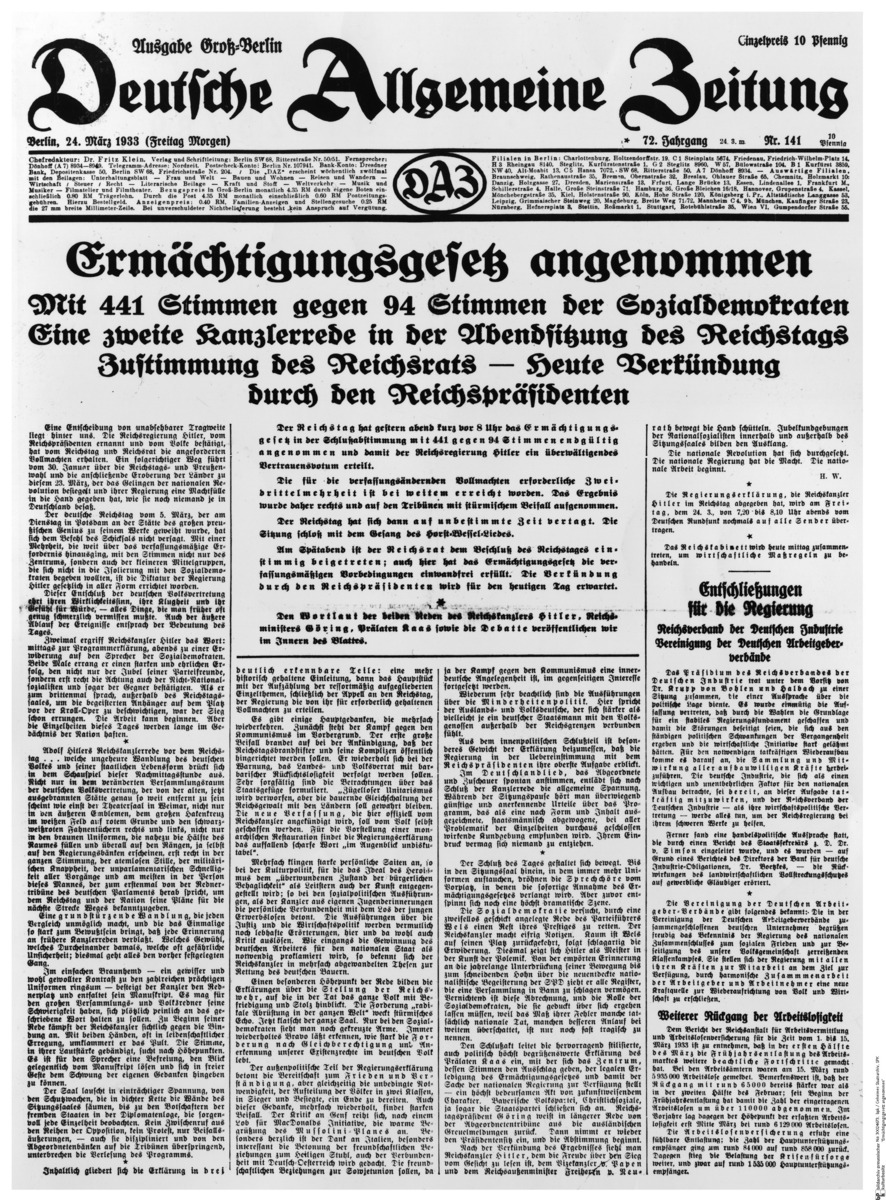Abstract
On March 7, 1933, Hitler presented his cabinet with a plan for the
definitive dissolution of the Reichstag. He intended to transfer
legislative powers to his administration, which would then be “enabled”
to make laws independent of the Reichstag and the president. Such a
fundamental alteration to the Weimar Constitution required a two-thirds
majority in the Reichstag. But even after the illegal exclusion of the
German Communist Party (KPD) deputies, the NSDAP/DNVP coalition still
lacked 31 votes. Hitler therefore opened negotiations with
representatives of the German Center Party, and they ultimately accepted
his proposed measure. In return, the Center Party was promised that the
integrity of the Catholic Church would be respected in Germany. The
official Reichstag vote occurred on March 23, 1933; only the Social
Democrats offered resolute opposition to the “Law to Remove the Distress
of the People and the State” (also known as “The Enabling Act”), which
henceforth formed the pseudo-legal basis of the Nazi dictatorship.
Below is the front page of the March 24, 1933, edition of the
Deutsche Allgemeine Zeitung. The
headline reads: “Enabling Act adopted with 441 votes against the 94
votes of the Social Democrats. A second speech by the Chancellor in the
evening session of the Reichstag. Approval of the Reichsrat – Today
promulgation by the Reich President.”
